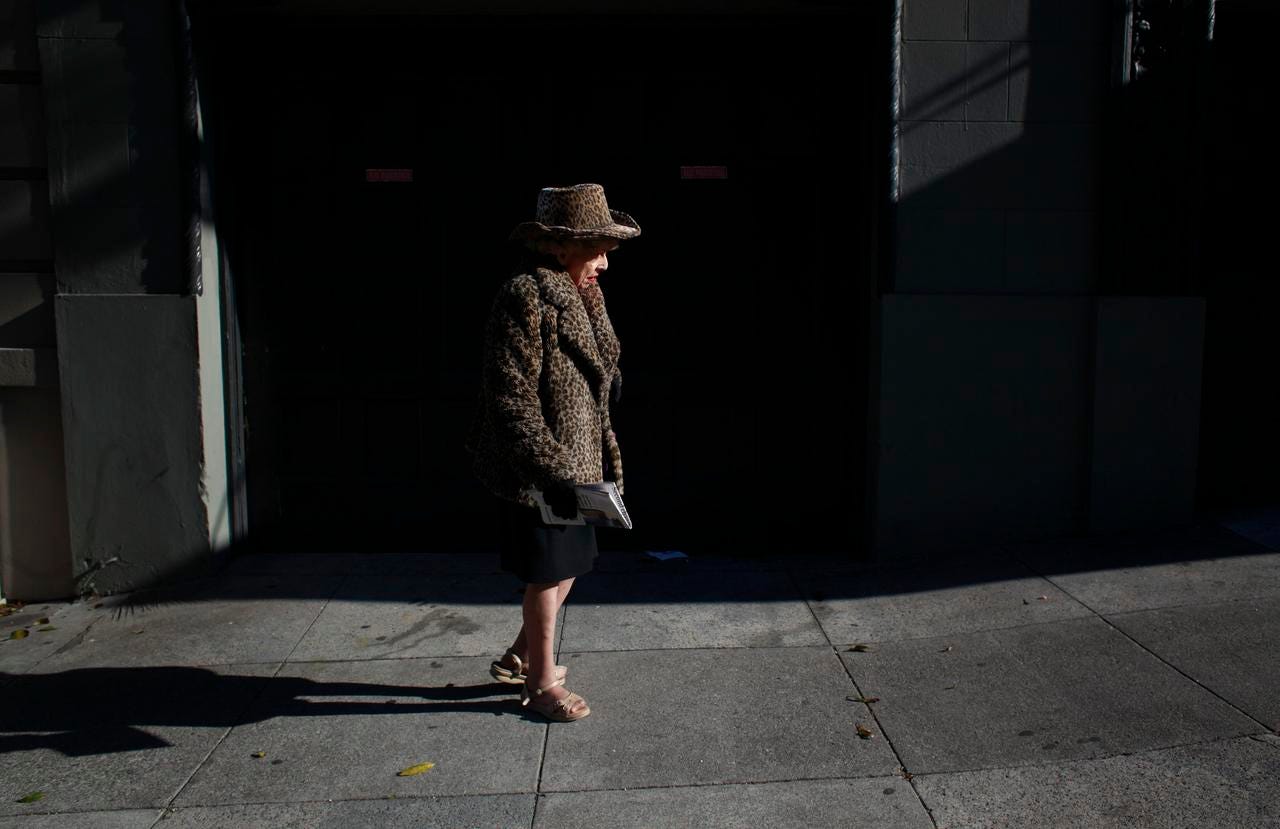Tracking The San Francisco Twin
A year after the passing of a sassy San Francisco celebrity, one soul-searching young twin traverses the town in search of Vivian Brown’s surviving sister.

Photo by Mike Kepka/San Francisco Chronicle/Polaris
Under the fading green awning and through the glass doors that adorn the pizza parlor on the corner of Bush and Powell are traces of tiny women who touched a city. Around the corner, away from an open-air kitchen where burly-chested, jolly cooks toss dough and slice sausage, are the best seats in the house — a table for two, near the window, illuminated by a pink neon sign.
Memories were brought to life here, over small pizzas, glasses of red wine and admirations from strangers - those who, after years of distant fascination, finally worked up the courage to make timid introductions, approaching the table with an “I’ve always wanted to say hi,” like children meeting long-revered heroes for the first time.
It was here, every night at 4:30 pm, for decades, that fancy sisters dined, watching the road for classic cars like the ones they drove back home (matching white Oldsmobiles) or inviting lucky strangers to share a meal. They made this …
Keep reading with a 7-day free trial
Subscribe to Narratively to keep reading this post and get 7 days of free access to the full post archives.



